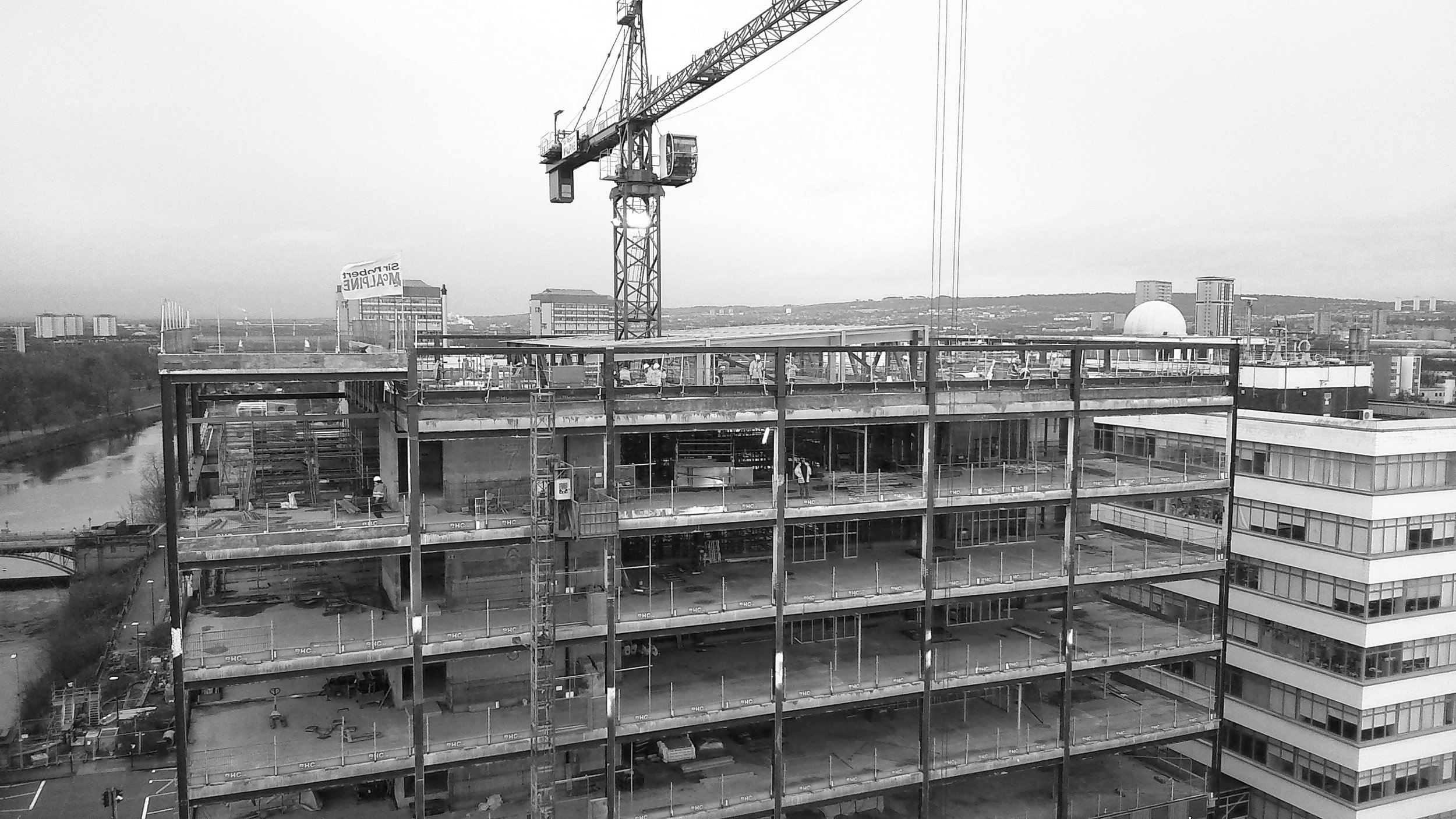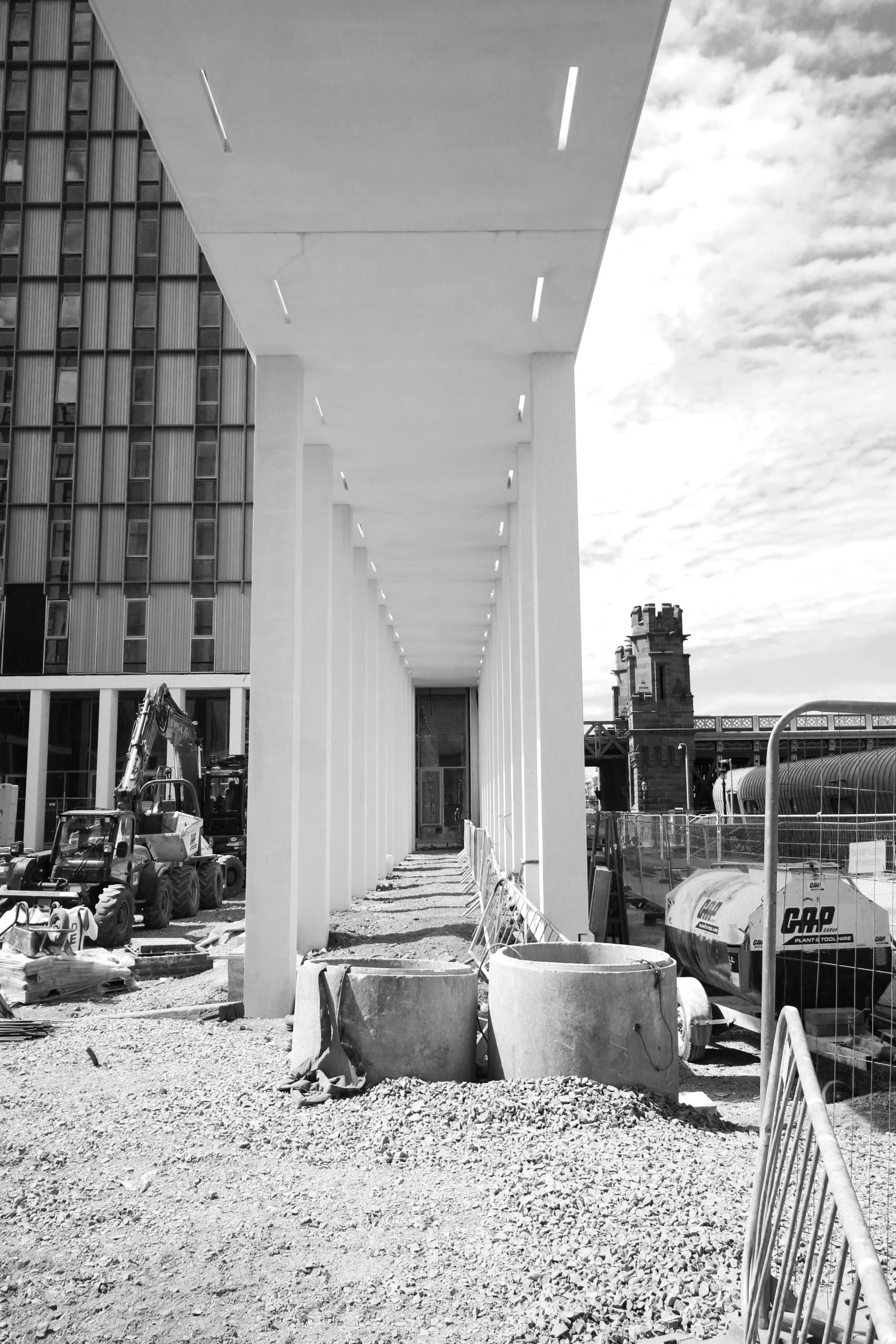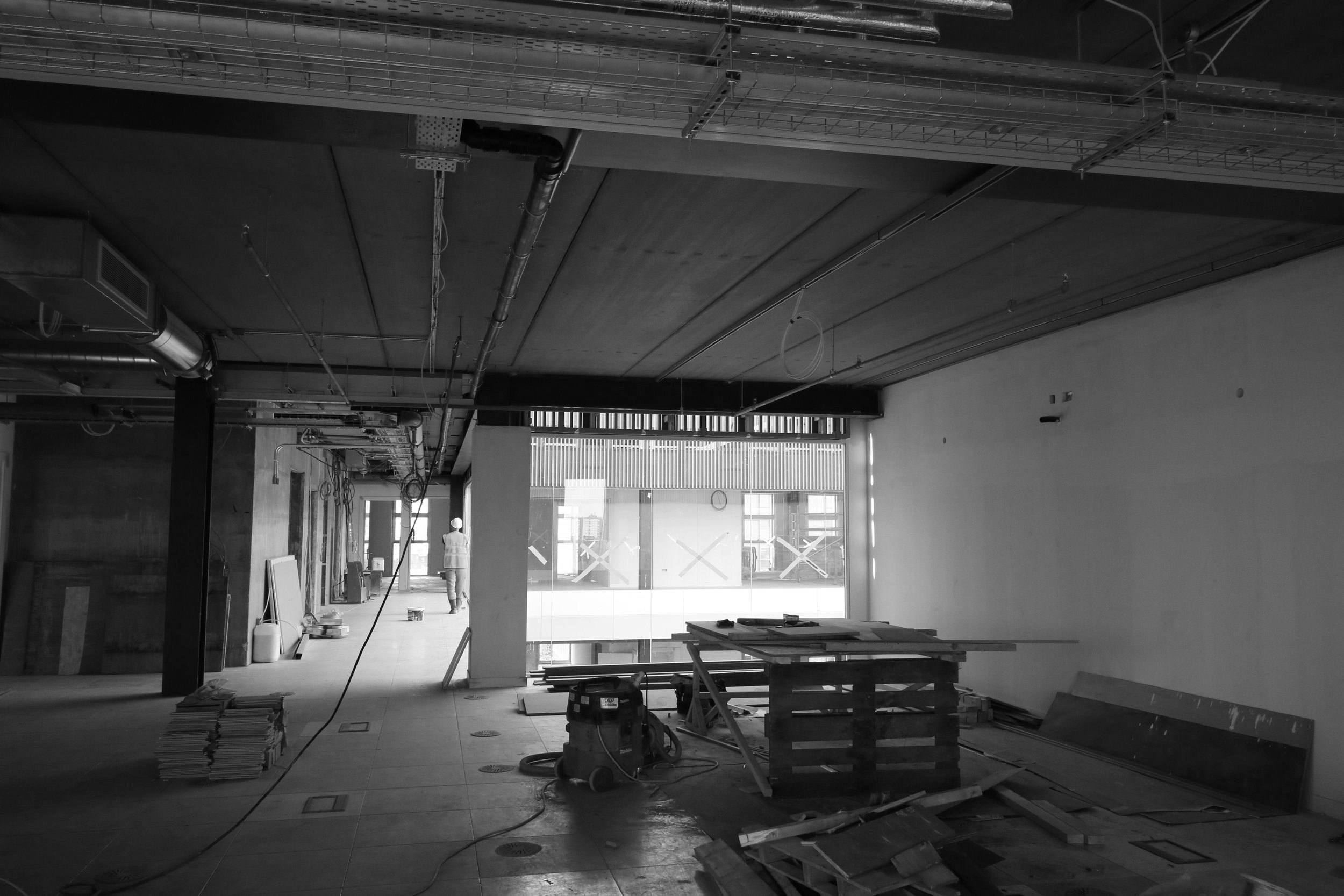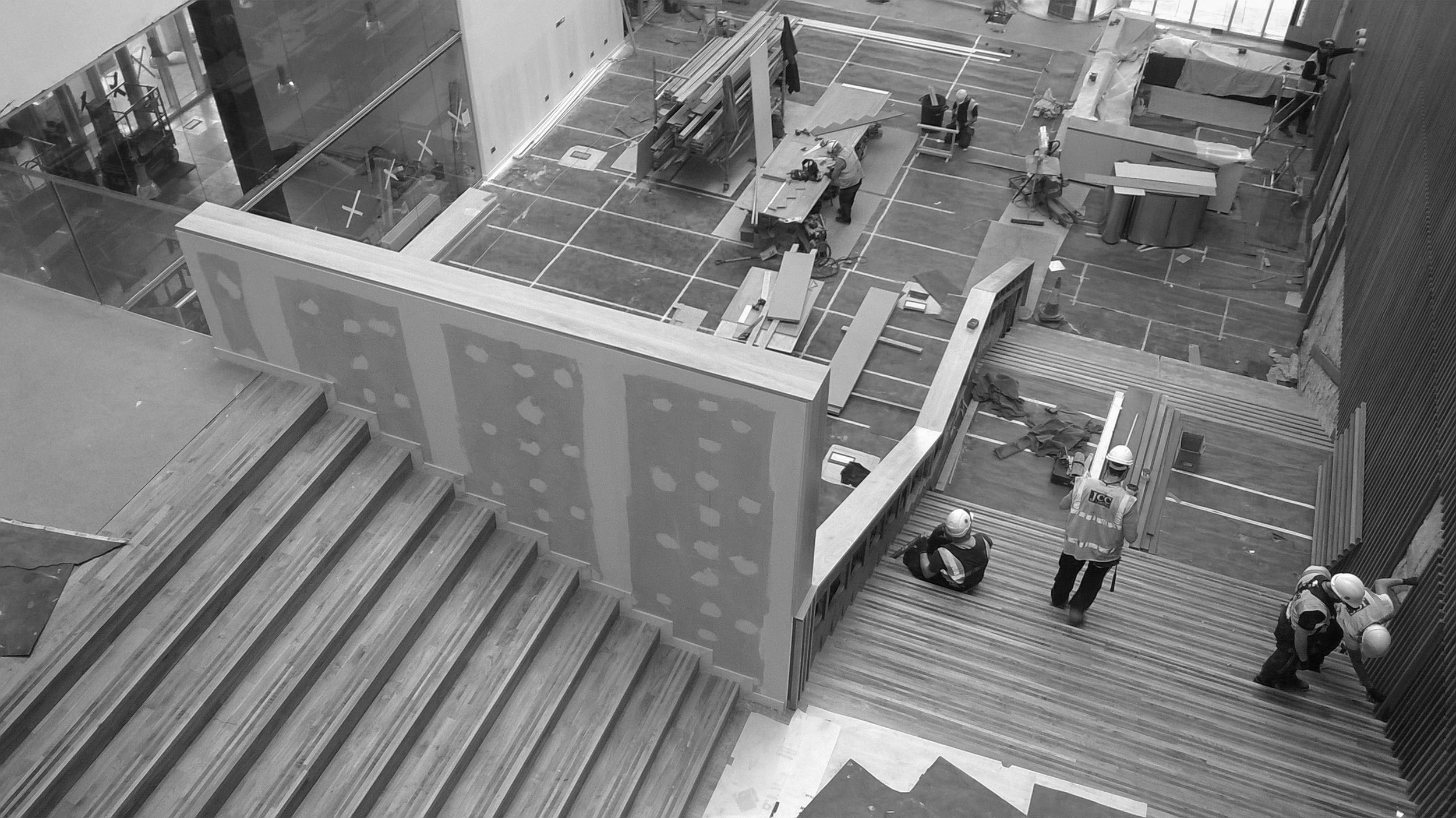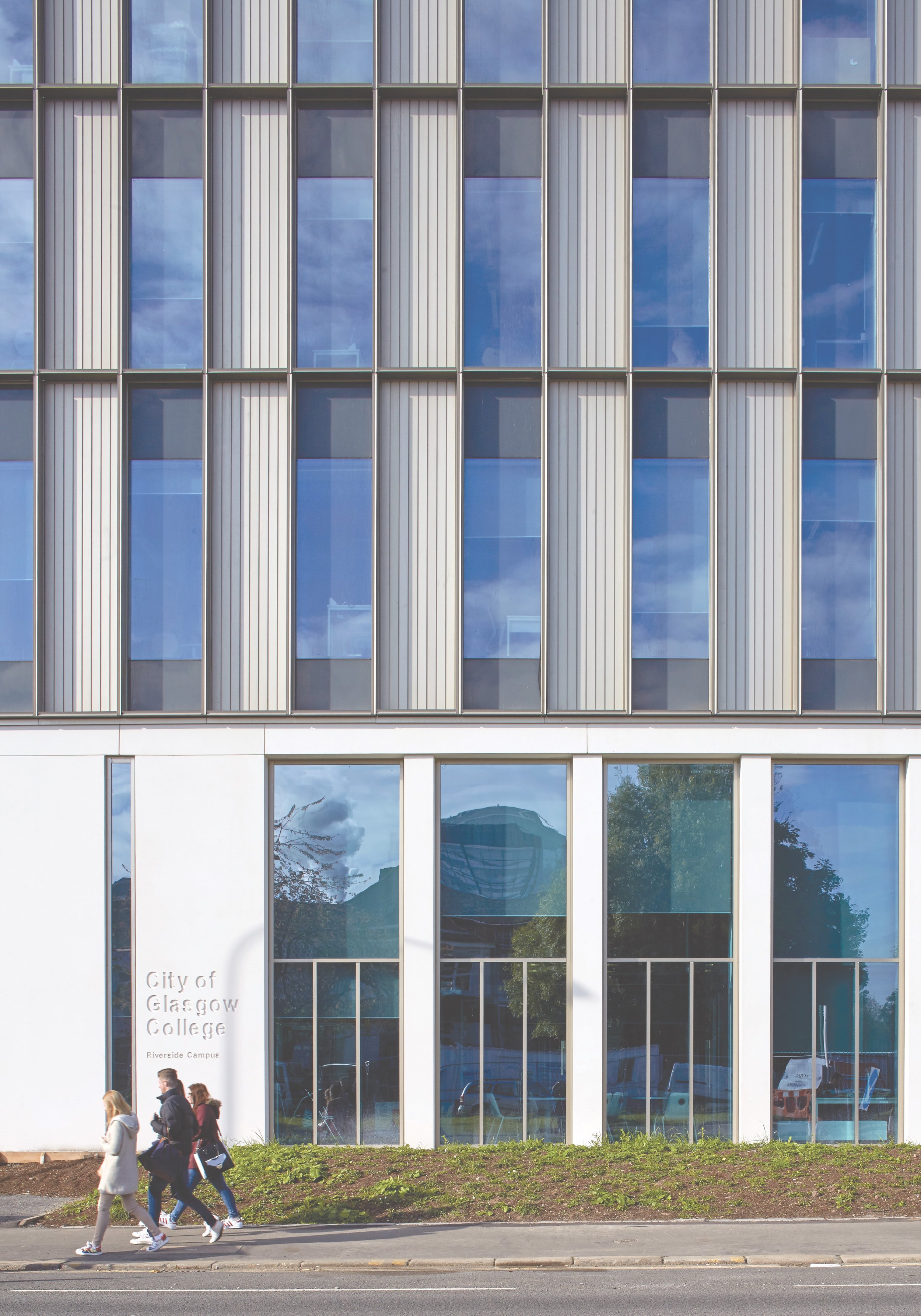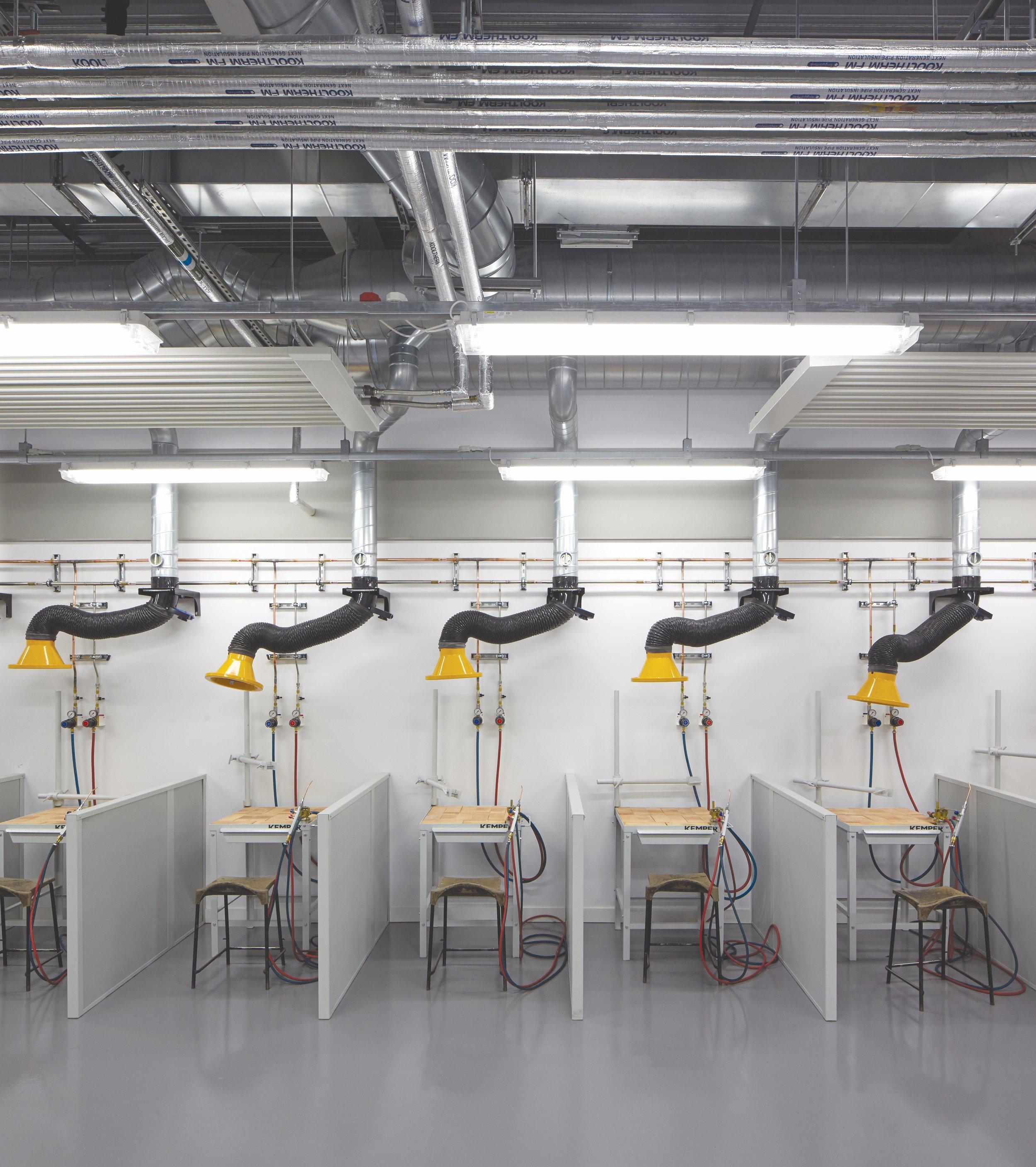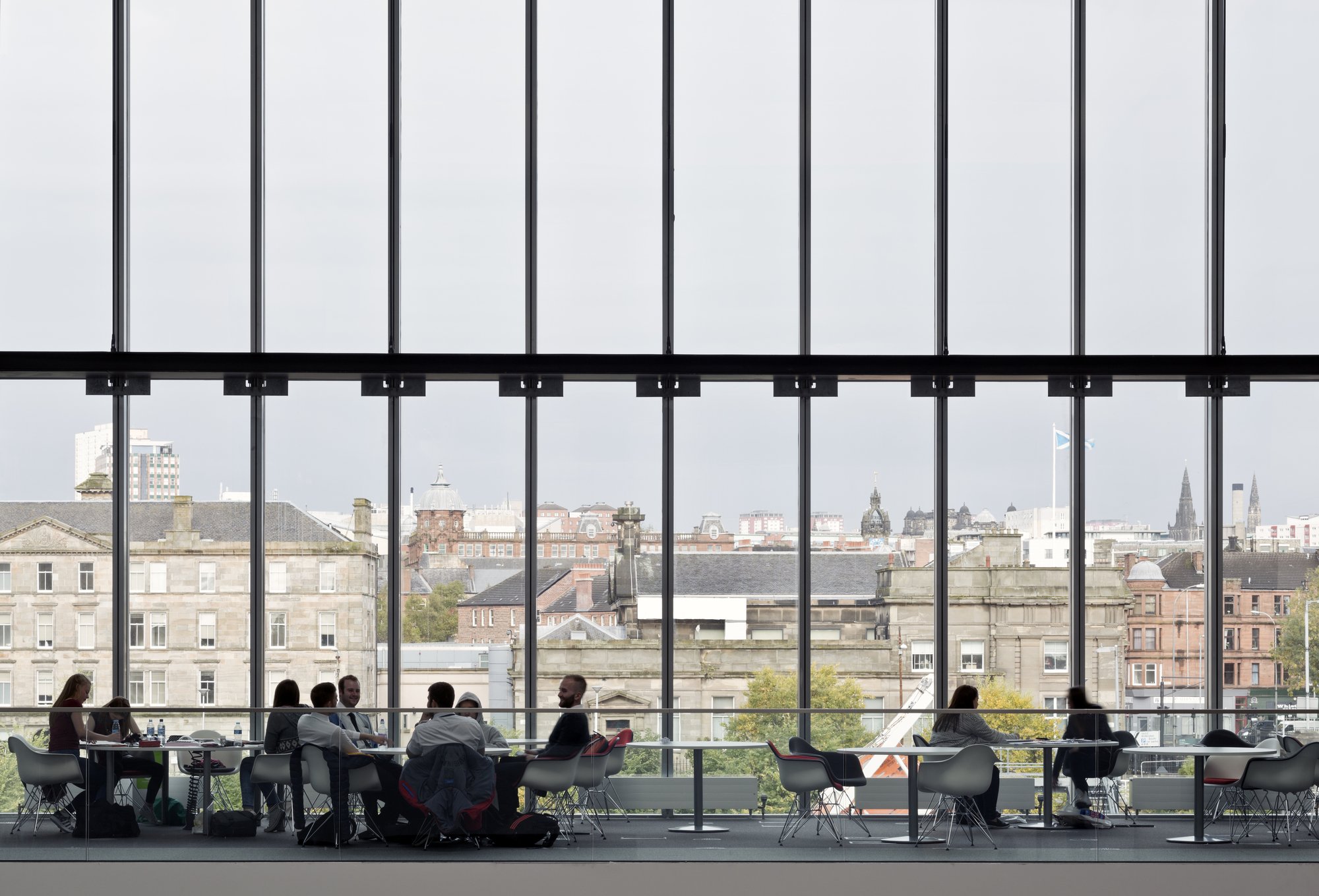City of Glasgow College
Riverside Campus
“Reiach and Hall’s City of Glasgow College has gone beyond the creation of beautiful architecture and transformed a place.” - Paul Little, Principal of City of Glasgow College
Riverside Campus for City of Glasgow College was a finalist in the RIBA Stirling Prize 2016 and was also awarded the 'Building Project of the Year (£10m-£50m)' Award at the British Construction Industry Awards 2016.
The Riverside Campus for the City of Glasgow College is the first completed section of one of the largest estates developments in the education sector in Europe. On completion of its sister campus, the City, the two campuses will accommodate more than 40,000 students of 130 nationalities and 1,200 members of staff and will offer the broadest range of courses and levels of any college in Britain.
The Riverside Campus is home to the world-leading Maritime College including marine engineering and science, technology, engineering and mathematics. A speciality is learning, teaching and research into renewable technologies including industry-leading test facilities on a wide range of renewable energy solutions.
Designed in a joint venture between Reiach and Hall Architects and Michael Laird Architects, the buildings at the Riverside Campus are the result of a combination of ideas about the city, about the student experience and about community.
The site occupies a key gateway in the city, at the south-west corner of the Albert Bridge, a major crossing over the Clyde from the south side. The new building deliberately engages this crossing point with considerable scale – it becomes a gatekeeper, marking the crossing point and creating a memorable new civic landmark.
The buildings are organised round two new civic spaces – a cloistered garden and a grand hall. These are convivial social spaces to encourage students to mix and realise opportunities for blended learning across disciplines. They act as the community heart of the buildings.
The design has an explicit simplicity, and projects the college brand to the city as an open and welcoming institution. Three buildings are clustered and organised around a garden at the edge of the Clyde and all the rooms are given either direct or oblique aspects to the river and the city to the North. Internally the accommodation is arranged around a “grand room” making orientation simple and intuitive. All teaching spaces are accessed through this space and it is as open as function permits. These internal and external rooms have dramatic views across the city and are visually engaged with the City Campus on Cathedral Street at the top of the city’s skyline.
The atrium is at the heart of the key design principle, to encourage cross discipline study and blended learning. The completed buildings are formed from a community of rooms and places that are all geared towards enhancing the opportunities for teaching and learning. Rather than being silos for different disciplines, the careful arrangement of spaces means that students and staff need to pass through areas of study that are not their own. The design of the building stimulates cross discipline opportunities among students and staff alike. The entire building has been designed as a learning landscape – from the way the buildings confidently relate and connect to the city, through street and park, through the rich unfolding and connected ‘learning ribbon’ of internal circulation and spaces that flow from street to roof, to detailed aspects of finishes and furniture.
Specialist facilities include a working ships engine, cross-discipline project bases to encourage blended learning, an innovative multi discipline engineering hall, a ships bridge simulation suite, alongside generic teaching, learning and support spaces.
The buildings blend together highly innovative low-tech strategies with industry leading incorporation of on-site renewables. The buildings are largely naturally ventilated, with the atrium acting as a natural stack helping to drive ventilation crossflows through the buildings. Manually openable windows are supplemented with automatic actuators ensuring temperature and air quality is maintained at high levels of comfort. Bespoke acoustic attenuators are included to ensure acoustic privacy between rooms and the atrium. Supporting all of these passive approaches is a comprehensive suite of onsite energy generation. The building incorporates a range of low carbon and energy generation measures including: exposed thermal mass to reduce cooling loads, natural ventilation, night purging to remove heat from the structure, careful modelling of external facades for solar shading, on-site energy generation with solar thermal panels and solar photovoltaic panels, bio-oil boilers (suitable for clean air city centres) and intelligent lighting systems.
The IES SBEM Model forecast a total carbon dioxide emission of 13.8 kg CO2/m2 per annum. This is less than a third of the emissions compared with HEEPI Sustainable Laboratories for Universities and Colleges benchmarking and places the building in the “best in class” category for carbon emissions. The building is BREEAM excellent and EPC “A” rated.
-
Contract Value
£66M
Area
22,000m2
Completion
2015
Client
The City of Glasgow College, Sir Robert McAlpine
Contract
Bespoke NPD
-
Architects - Reiach and Hall Architects / MLA
Interior Design - Graven
Structural Engineer - ARUP Scotland
M&E Engineers - FES / Hulley & Kirkwood
Quantity Surveyor - Sweet Group
Landscape Architect - Rankinfraser Landscape Architects
Signage - Studio LR
Acoustician - ARUP
Fire Engineer - Jeremy Gardiner Associates
Lighting Designers - FES / Hulley & Kirkwood
CDMC - Kirk & Marsh
Main Contractor - Sir Robert McAlpine
-
Awards
Finalist RIBA Stirling Prize 2016
BCI Award Building Project of the Year 2016
Scottish Design Awards - Architecture Grand Prix 2016
Scottish Design Awards - Public building if the Year 2016
National RIBA Award 2016
RIAS Award 2016
Finalist RIAS Andrew Doolan Best Building in Scotland 2016
Civic Trust Award 2016
-
The Riverside Campus for the City of Glasgow College is the first completed section of one of the largest estates developments in the education sector in Europe. On completion of its sister campus, the City, the two campuses will accommodate more than 40,000 students of 130 nationalities and 1,200 members of staff and will offer the broadest range of courses and levels of any college in Britain.
The Riverside Campus is home to the world-leading Maritime College including marine engineering and science, technology, engineering and mathematics. A speciality is learning, teaching and research into renewable technologies including industry-leading test facilities on a wide range of renewable energy solutions. Designed in a joint venture between Reiach and Hall Architects and Michael Laird Architects, the buildings at the Riverside Campus are the result of a combination of ideas about the city, about the student experience and about community. The site occupies a key gateway in the city, at the south-west corner of the Albert Bridge, a major crossing over the Clyde from the south side. The new building deliberately engages this crossing point with considerable scale – it becomes a gatekeeper, marking the crossing point and creating a memorable new civic landmark.
The buildings are organised round two new civic spaces – a cloistered garden and a grand hall. These are convivial social spaces to encourage students to mix and realise opportunities for blended learning across disciplines. They act as the community heart of the buildings. The design has an explicit simplicity, and projects the college brand to the city as an open and welcoming institution. Three buildings are clustered and organised around a garden at the edge of the Clyde and all the rooms are given either direct or oblique aspects to the river and the city to the North. Internally the accommodation is arranged around a “grand room” making orientation simple and intuitive. All teaching spaces are accessed through this space and it is as open as function permits. These internal and external rooms have dramatic views across the city and are visually engaged with the City Campus on Cathedral Street at the top of the city’s skyline.
The atrium is at the heart of the key design principle, to encourage cross discipline study and blended learning. The completed buildings are formed from a community of rooms and places that are all geared towards enhancing the opportunities for teaching and learning. Rather than being silos for different disciplines, the careful arrangement of spaces means that students and staff need to pass through areas of study that are not their own. The design of the building stimulates cross discipline opportunities among students and staff alike. The entire building has been designed as a learning landscape – from the way the buildings confidently relate and connect to the city, through street and park, through the rich unfolding and connected ‘learning ribbon’ of internal circulation and spaces that flow from street to roof, to detailed aspects of finishes and furniture. Specialist facilities include a working ships engine, cross-discipline project bases to encourage blended learning, an innovative multi discipline engineering hall, a ships bridge simulation suite, alongside generic teaching, learning and support spaces.
The buildings blend together highly innovative low-tech strategies with industry leading incorporation of on-site renewables. The buildings are largely naturally ventilated, with the atrium acting as a natural stack helping to drive ventilation crossflows through the buildings. Manually openable windows are supplemented with automatic actuators ensuring temperature and air quality is maintained at high levels of comfort. Bespoke acoustic attenuators are included to ensure acoustic privacy between rooms and the atrium. Supporting all of these passive approaches is a comprehensive suite of onsite energy generation. The building incorporates a range of low carbon and energy generation measures including: exposed thermal mass to reduce cooling loads, natural ventilation, night purging to remove heat from the structure, careful modelling of external facades for solar shading, on-site energy generation with solar thermal panels and solar photovoltaic panels, bio-oil boilers (suitable for clean air city centres) and intelligent lighting systems.
The IES SBEM Model forecast a total carbon dioxide emission of 13.8 kg CO2/m2 per annum. This is less than a third of the emissions compared with HEEPI Sustainable Laboratories for Universities and Colleges benchmarking and places the building in the “best in class” category for carbon emissions. The building is BREEAM excellent and EPC “A” rated.
City of Glasgow College Principal, Paul Little, said: “This is a truly outstanding, world-class campus. It represents a bold statement of intent by City of Glasgow College to lead the global maritime college community. Within that community, our Riverside Campus is now the most advanced of all colleges throughout the world. We are making a significant contribution towards the renaissance of Glasgow’s maritime industry and we have made a transformational difference with the opening of this new campus.
Its seven story atrium provides a beating heart at the centre of this vibrant building, and is the entrance to the most modern, most technologically advanced and most future proofed maritime campus of all 230 such colleges anywhere in the world. Riverside’s wonderful learning areas are deliberately open and connected and my favourite feature, the outstanding seven storey high atrium window, offers staggering views from each and every floor.
We are delighted with Riverside. Our students are enjoying the spaces and it is having a positive impression on our industry partners across the globe.”
RIBA Stirling Prize 2016 Riverside Campus
Video by Jim Stephenson @StephensonAnd
Sketchbook

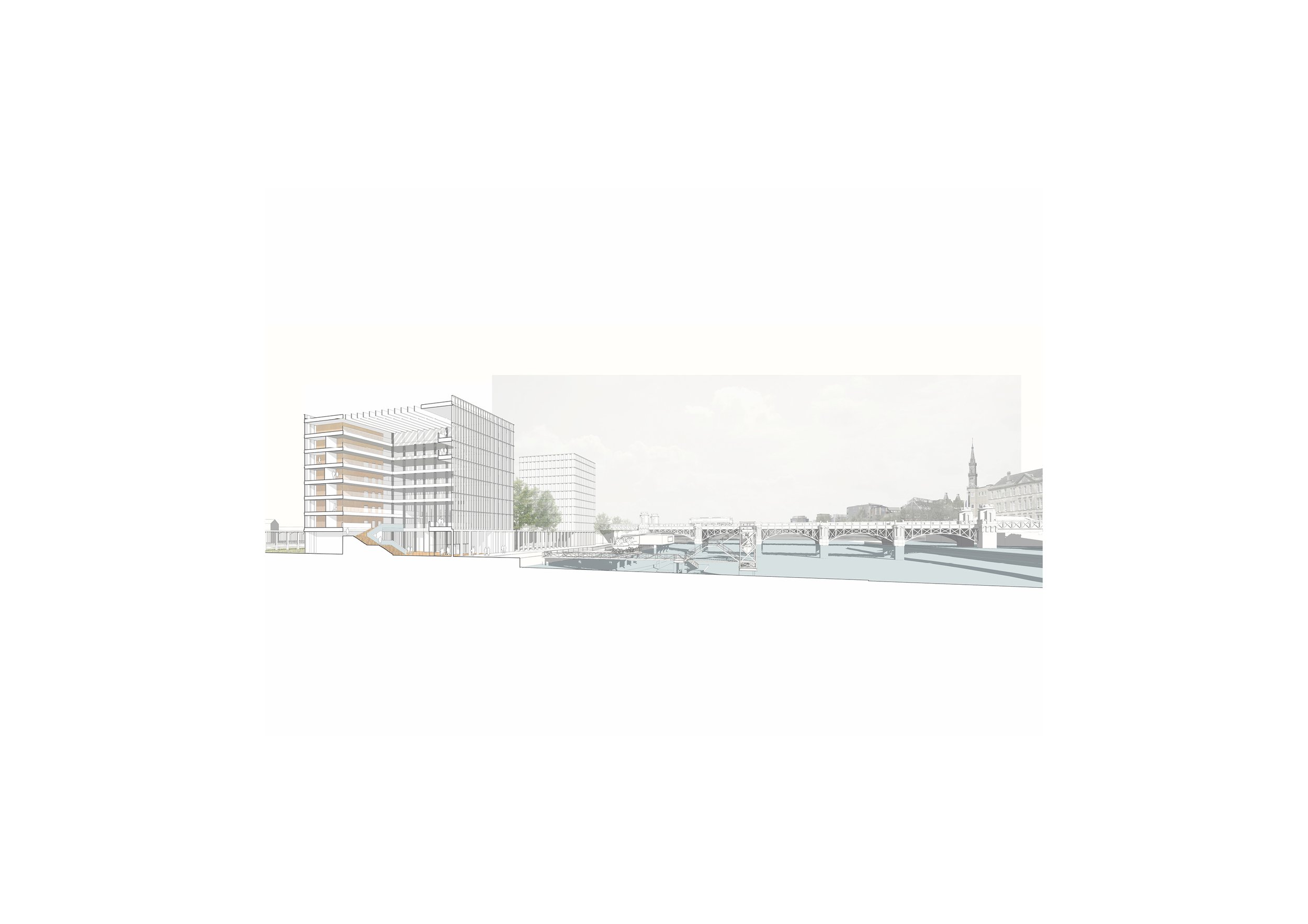
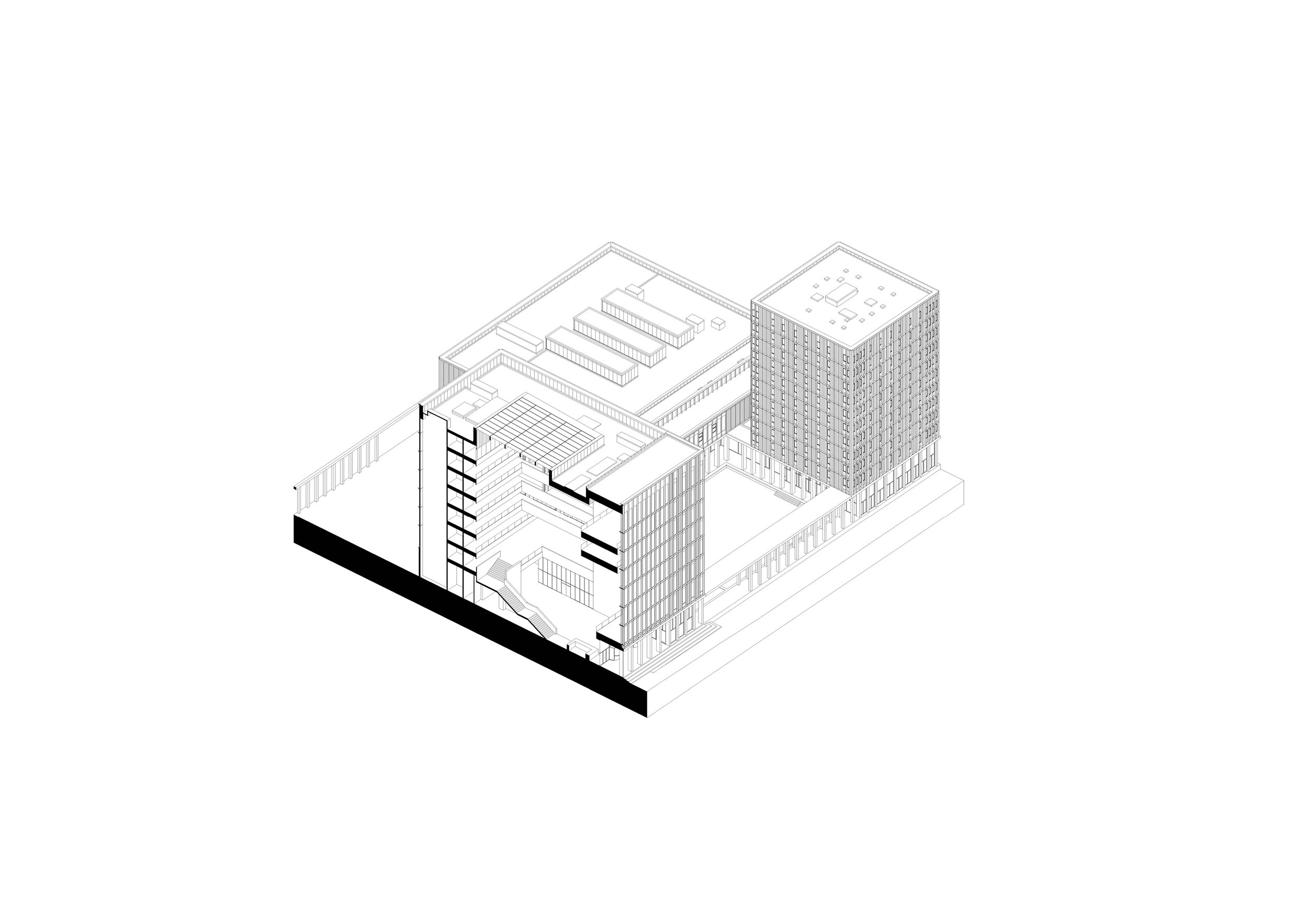

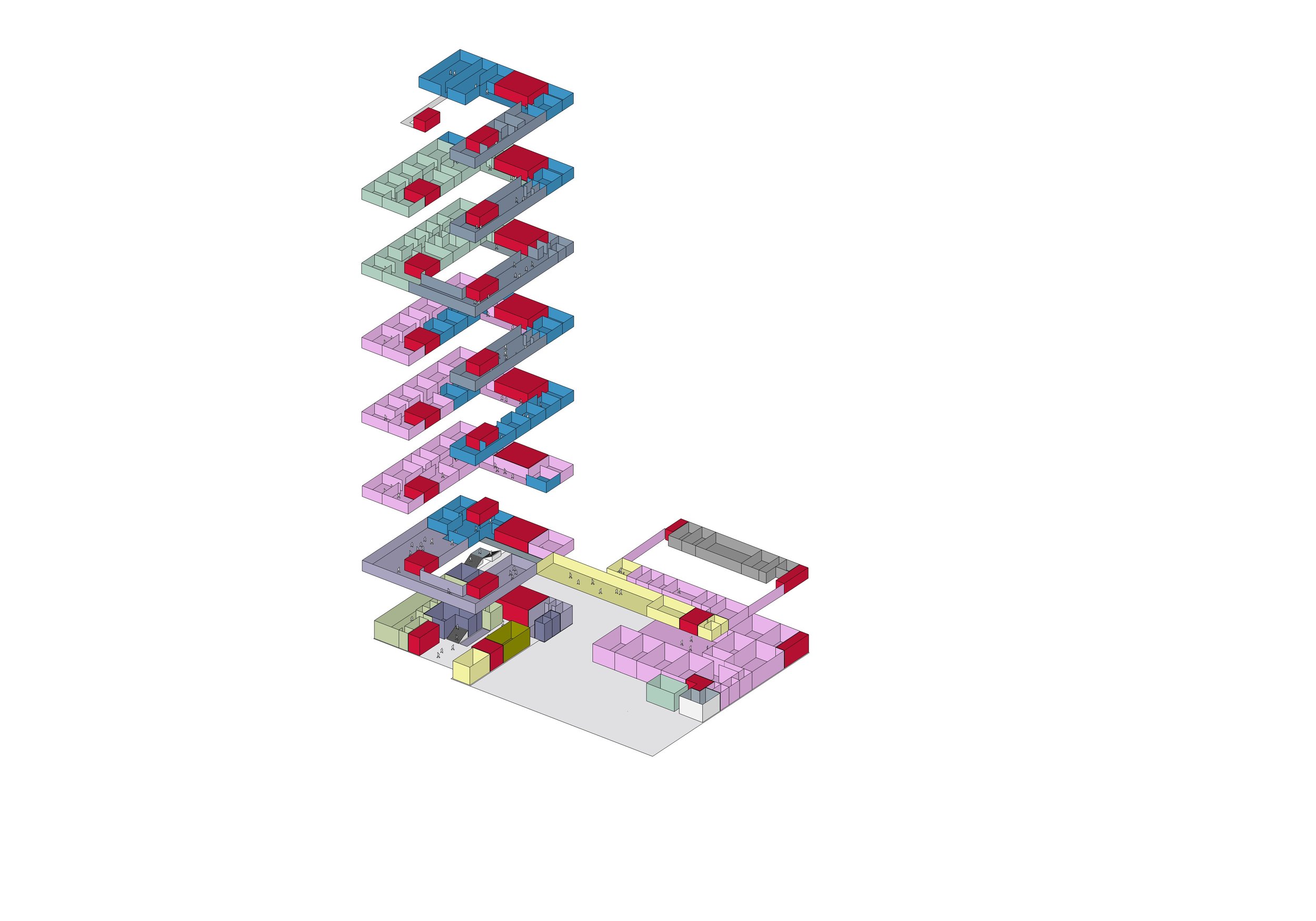

Site Photographs
